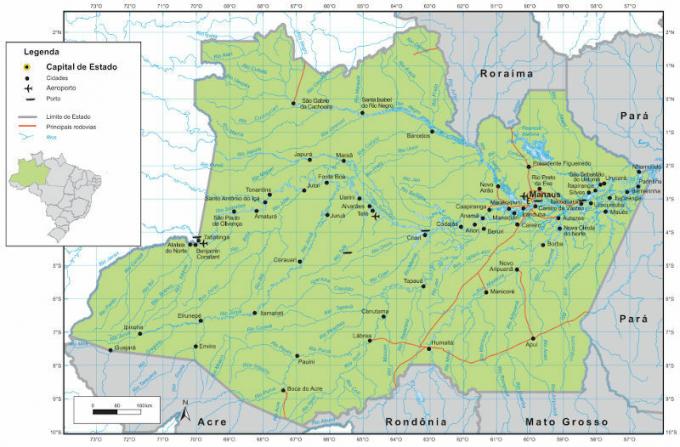Brazil received approximately six million immigrants, if we take the arrival of the Portuguese in 1500 as a reference. The precise number of Africans of different ethnicities who were forced to migrate to the country as a result of slavery is unknown, being estimated at up to four million individuals. We will analyze these migratory currents to Brazil according to the regional divisions of IBGE.
North region: Predominance of Portuguese immigrants. We can highlight, at the beginning of the 20th century, the presence of Japanese immigrants, who started plantations of tea and jute, as well as the Syrian-Lebanese immigrants, who arrived in the region to work in the business.
Northeast Region: Predominance of Portuguese and African immigrants. In sporadic moments, Dutch and French invasions also ended up changing the landscape of the population local, although they did not have the same dimension as the Italian and German colonizations had in other regions.
Midwest region: Predominance of Portuguese immigrants.
Southeast region: Predominance of Portuguese and African immigrants. In the states of Rio de Janeiro and Espírito Santo, Swiss-German immigrants also appeared. Brazil in the first half of the 19th century, in the first experience of the Brazilian government in attracting immigrants.
In the state of São Paulo, the great Italian immigration that began in the second half of the 19th century deserves to be highlighted. With the transformation of slave labor to wage labor and the capitalist pressure for training of a domestic consumer market, the state government offered incentives for the entry of immigrants Italians. During this period, Italy was going through a process of political reorganization, marked by a war between the north and south of the country. Most of the pioneer Italian immigrants came from southern Italy, the least developed area of the country to this day.
Italian immigration continued until the period corresponding to World War II, when immigration was restricted because Brazil assumed a geopolitical position of war against the Axis, which was constituted by Germany, Italy and Japan.
At the end of the 19th century, the immigration of Spaniards was also decisive for São Paulo. After the decline of Italian immigration at the beginning of the 20th century, a large part of the Spanish workforce went to the coffee plantations.
Do not stop now... There's more after the advertising ;)
Another migratory current relevant to the constitution of the population of São Paulo was the Japanese, who arrived in the state around 1908, due to the migration policy imposed by the Meiji Era in Japan, which encouraged migration due to the country's large population concentration and the scarcity of land agricultural. The areas that received these immigrants were Vale do Ribeira, south of São Paulo, and some cities in the west of São Paulo. Its economic activities were of an agricultural nature, mainly tea and rice production. For the same geopolitical reason, Japanese entry was limited during the period corresponding to World War II.
Arab immigrants also stand out, who settled mainly in the city of São Paulo and started activities aimed at commerce and services. Throughout the 20th century, especially from the 1980s and 1990s onwards, other peoples began to migrate to the state from São Paulo, as well as Koreans, Chinese and Bolivians, which have not yet reached the same level as previous trends. In recent years, there has been the arrival of immigrants from the African continent, such as Nigerians and Angolans, as well as Haitians.
South region: Due to strategic reasons related to the occupation of borders due to the presence of family farming, practiced in small properties, there was a predominance of diverse European currents, which can be better understood according to the state:
Paraná - In the northwest portion, presence of Japanese. In the rest of the state, presence of Italians, Germans and Slavs (Ukrainians, Poles, Russians), mainly in the region of Curitiba.
Santa Catarina - there was a strong immigration of Germans, who dedicated themselves mainly to agricultural activities, with emphasis on cities like Joinville, Blumenau, Brusque and Itajaí and for the Italian immigrants, who also dedicated themselves to agricultural activities, with emphasis on the cities of Criciúma and Urussanga.
Rio Grande do Sul - predominance of German immigrants, as in the current cities of São Leopoldo, Santa Maria and Novo Hamburgo, and mainly Italians, as in the current cities of Caxias, Garibaldi and Bento Gonçalves. Immigrants dedicated themselves to agriculture and, later, to industrial activities.
Julio César Lázaro da Silva
Brazil School Collaborator
Graduated in Geography from Universidade Estadual Paulista - UNESP
Master in Human Geography from Universidade Estadual Paulista - UNESP


